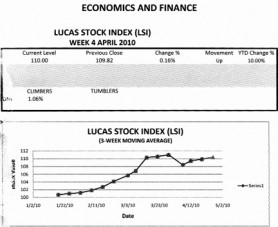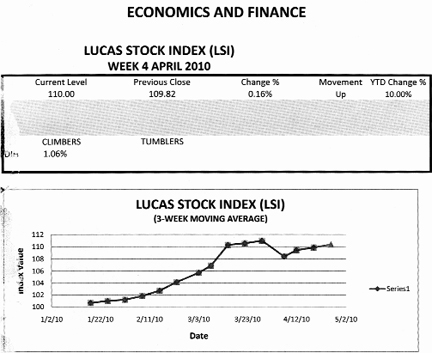by Rawle Lucas
Rawle Lucas is a Guyanese-born Certified Public Accountant and Assistant Vice-President of the Lending Services Division.
Mr. Lucas has agreed to serve as a columnist with the Stabroek Business and will be contributing articles on economic, financial and development matters.
 Astounding
Astounding
The modern world runs on fossil fuels — specifically, coal and oil. These sources of energy are cheap and easy to use. But, they leave the planet at risk of destruction from greenhouse gases and climate change. The prospect of eliminating the human species from the overuse of fossil fuels has led to the frantic search for alternative ways of producing energy and saving the planet. Despite the promise of solar and wind, they are still not producing enough base-load energy for a modern society, especially with the demand for energy expected to climb more and more. Since coal and oil create pollution and are not renewable, the world risks ever-increasing energy prices and military conflicts as these vital materials become harder and harder to find. The environmental risks from continued dependence on fossil fuels have induced some countries to spend huge sums of money looking for safe alternatives. To this end, a growing number of countries have joined the search for an astounding new form of energy: fusion power.
Fusion Power
The pursuit of this engineering endeavour is fascinating and easily arouses curiosity in its potential energy generation while possessing the capability of protecting the planet. There is a strong belief that fusion power can produce energy in abundance using very commonly available resources. This form of power is the generation of energy from the coming together, or fusion, of light atomic nuclei to form the central component of the energy source. Despite the complexity of the process, the engineering feat is to replicate the behaviour of the sun in the generation of energy. The sun produces a large amount of energy in the form of light and heat by relying on its intense gravity that forces hydrogen atoms together.
The man-made effort of fusion power seeks to achieve a similar effect that would enable a power plant to produce electricity. It involves joining smaller nuclei to produce more energy than it would take to start the reaction. Scientists know how to do this. It is the process that comes naturally to the sun, sustaining the energy produced, that has eluded scientists and engineers for a long time. They have been grappling for many decades now with how to sustain the reaction long enough to produce a net energy gain. The best known result so far is one in which the reactor produced energy that was equivalent to two-thirds of the energy that it took to start the reaction. If that ratio does not change to where the energy output is greater than the energy input, fusion power would remain an unrealized alternative to fossil fuels and other sources of energy.
Speculating
The disappointment that such an outcome represents might be about to change. Quite recently, investors have been speculating that fusion power could be available in commercial quantities within the next few years. Scientists have been using differing approaches to seeking a breakthrough in sustaining the energy gains from the fusion process. A key strategy has been to develop small fusion reactors and there is some expectation that such reactors could be available in a few years, if all goes well. The most imminent breakthrough is linked to a Canadian company which reportedly believes that it has found a low-cost method of producing fusion power efficiently. One source estimates that for an investment of about US$50 million, the company could produce about 100 megawatts of power. The bright spot about this outlook is that electricity could be consumed at the relatively low cost of four cents per kilowatt hour. The Canadian company linked to this progress believes that it would be ready to show off the viability of this technology in another five to eight years.
Optimism
The status of research on the fusion technology does not seem to bear out fully the claim that such commercially viable fusion technology is within reach so soon. But, there is plenty of optimism that the research is moving in the right direction after being ridiculed for its slow pace and low accomplishments. Interest in the technology has intensified since the search for alternatives to fossil fuels began. But the quest for fusion power has existed for a very long time. Even though research on this subject might have been taking place in the United States of America (USA) since the nineteen fifties, it is still to break into the commercial market.
Despite the slow progress, other countries see value in fusion power and have joined in the search for a solution to this energy source. These countries include Brazil, Canada, China, Japan, Korea, Russia and the European Union. A number of European scientists have been working on developing fusion power, but the best known efforts have fallen short of the desired outcome. However, European scientists remain encouraged by some developments in the technology that has enhanced their chances of success. Evidence of this enthusiasm is the willingness of countries to spend billions of Euros on the construction of a reactor in Cadarache in France. The price tag on this facility is expected to exceed that which was initially estimated to cost in excess of €10 billion. The facility should be ready for business in 2018. When operational, the reactor would produce 500 megawatts of power in reportedly 400-second bursts.
Appeal
Fusion power is appealing for several reasons. This energy source finds its appeal in the availability of unlimited resources for its fuel supply. The necessary fuel can be extracted from seawater, allowing it to be inexpensive. Moreover, fusion power is more amiable than fission power. Unlike the more familiar and more dangerous nuclear fission, the only by-products of fusion energy are helium and neutrons, making it non-polluting and carbon-free. Unlike its cousin nuclear fission (which splits uranium atoms), it leaves no long-lived radioactive waste. As icing on the cake, fusion is capable of producing the most energy compared to any other known source. Like the sun, fusion could keep the homes and the factories burning forever. As wonderful as that would be, fusion power does not appear feasible at this time and is a long way from featuring in the energy strategy of any country.
LUCAS STOCK INDEX
In week four of April, the Lucas Stock Index (LSI) rose less than 1 percent. The slight increase of the index stemmed from the increase in share price of Banks DIH (DIH). All other stocks on the index showed no change in value from the previous week. The LSI also remains in positive territory for the year, reflecting a 10 percent increase in value since the start of trading in 2010. This leaves the index 2.5 times higher than the returns to be obtained from the risk-free Treasuries that will mature in June 2010.

